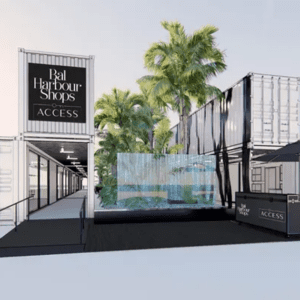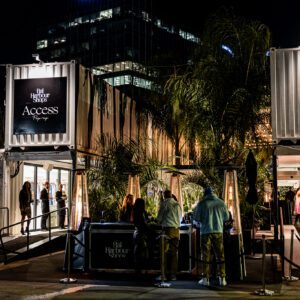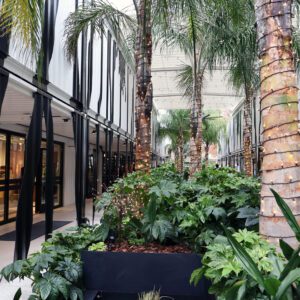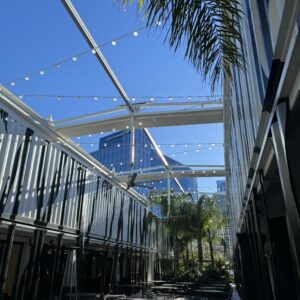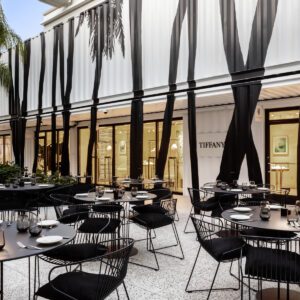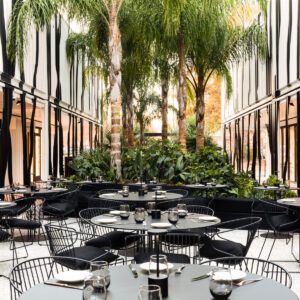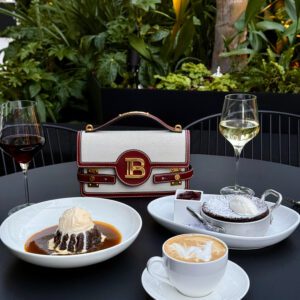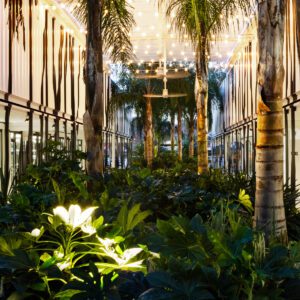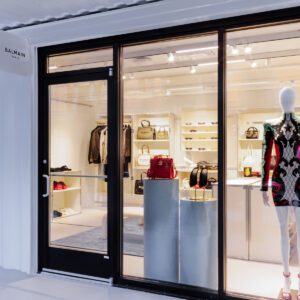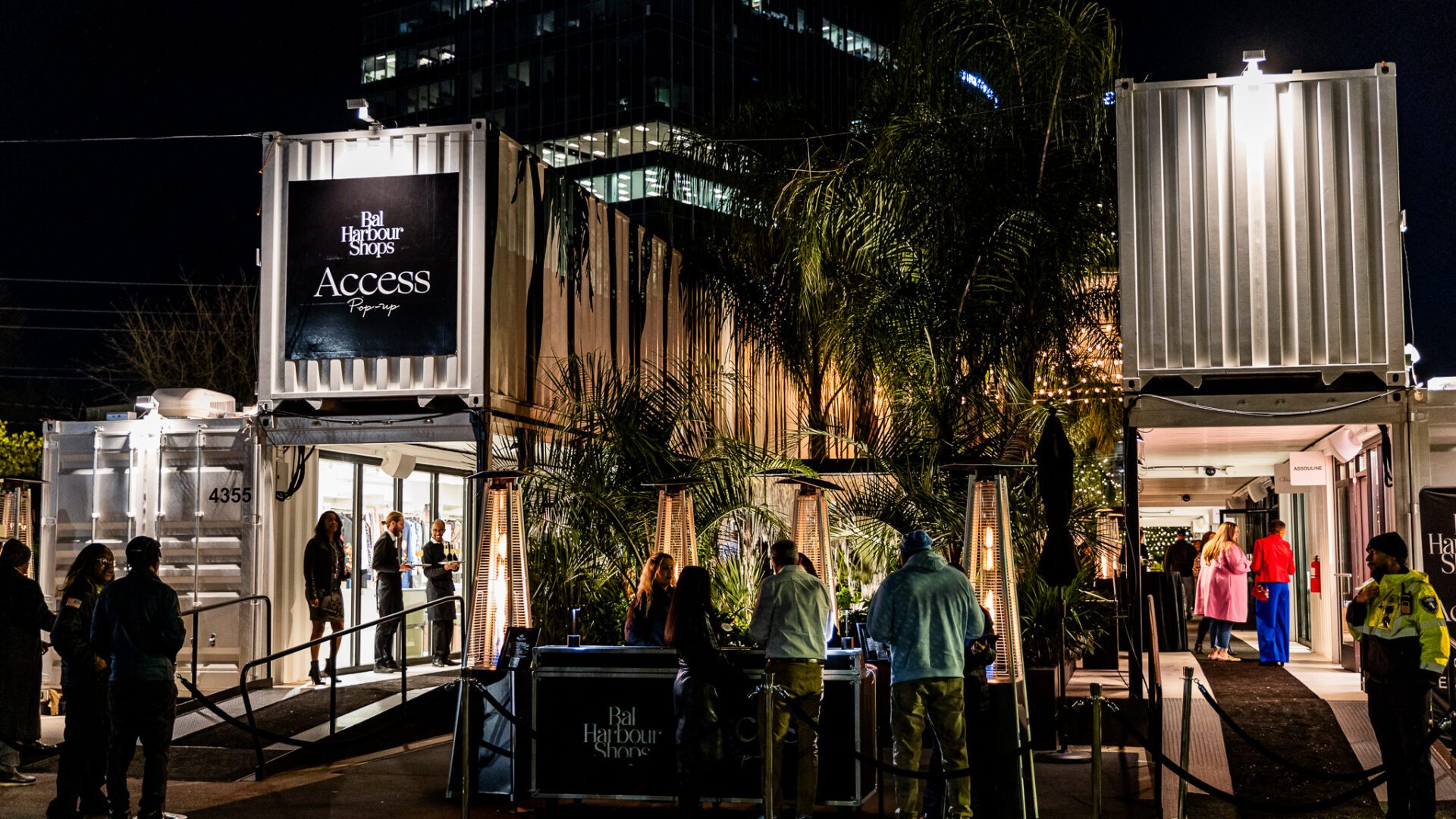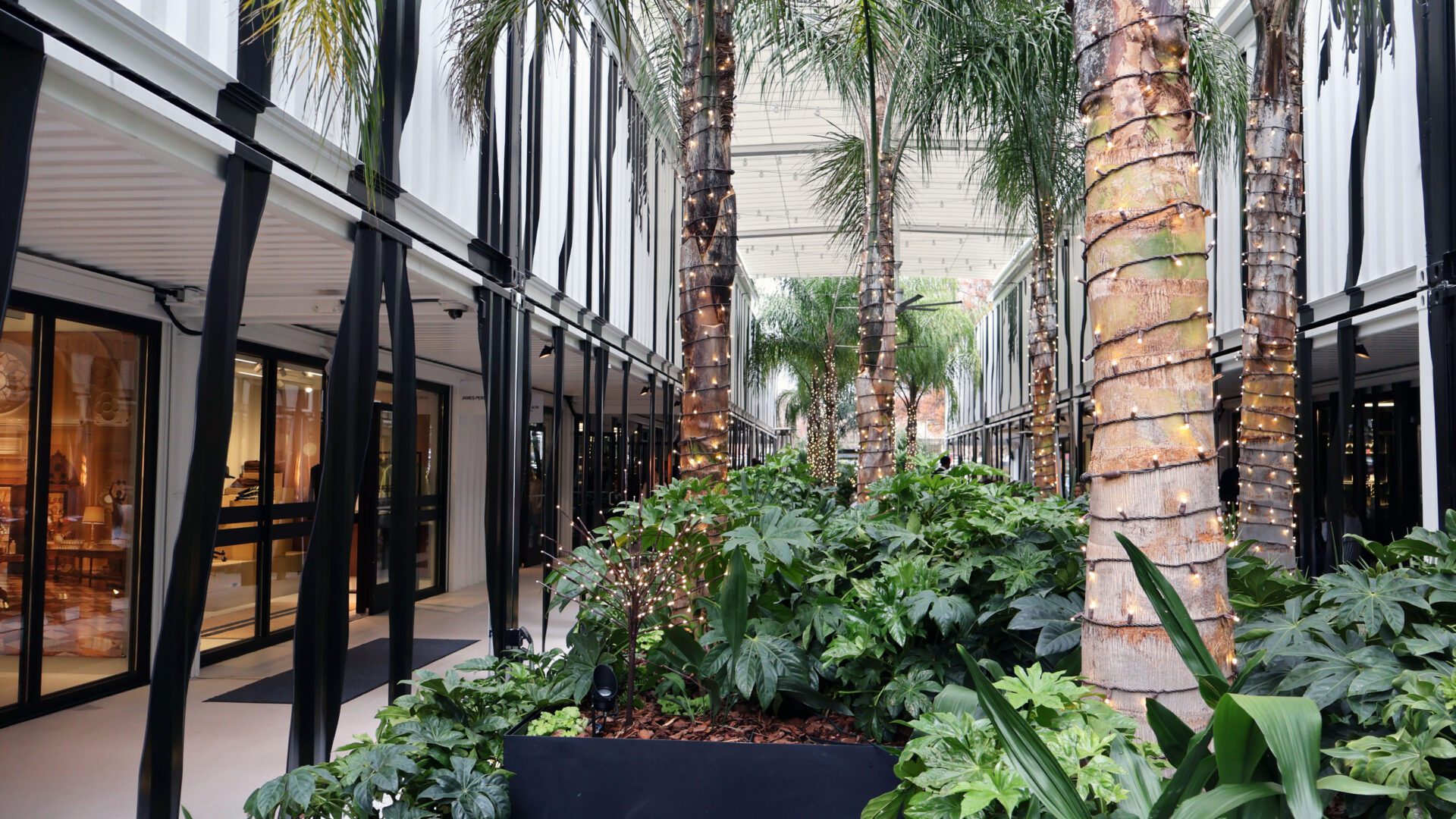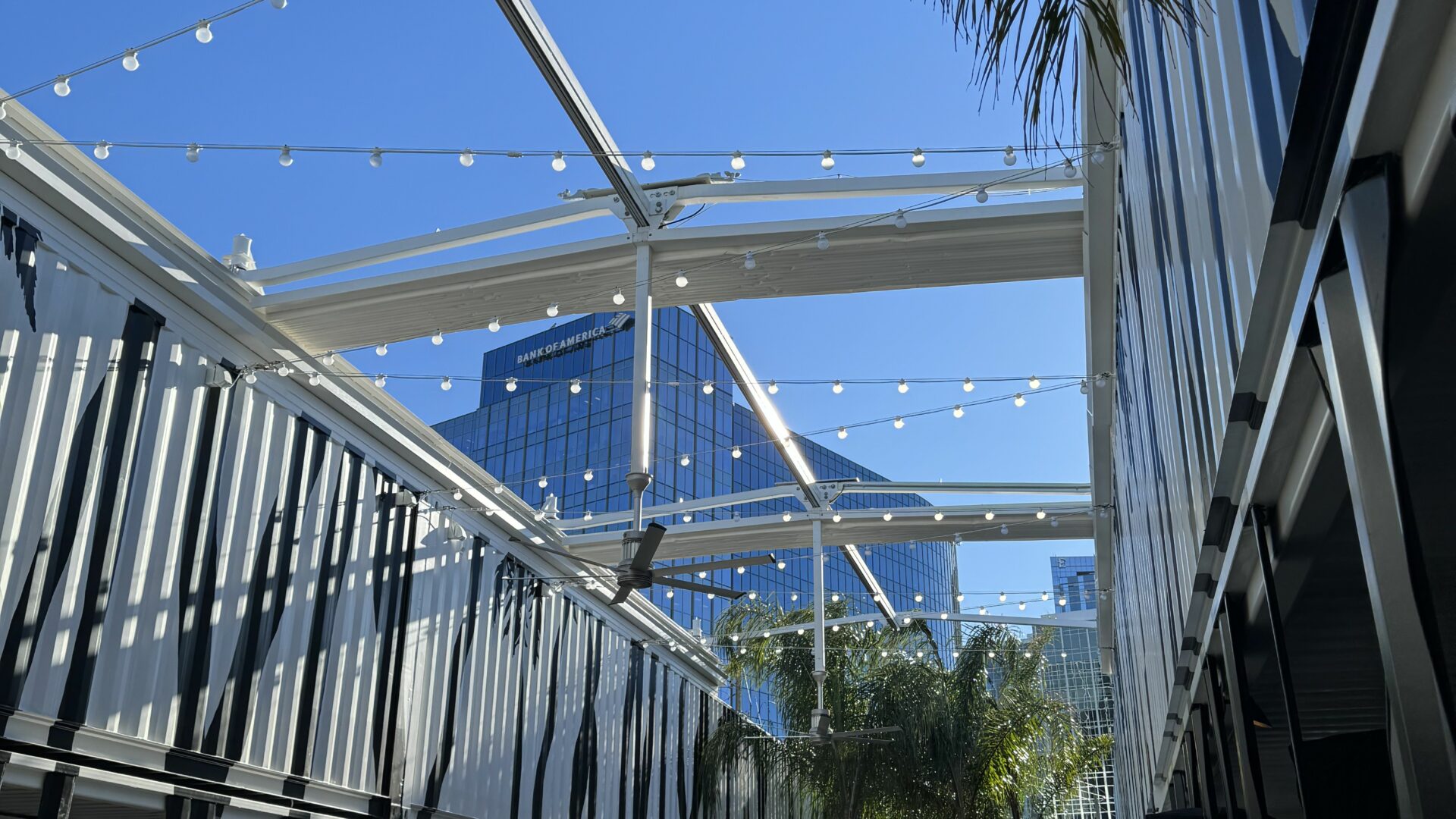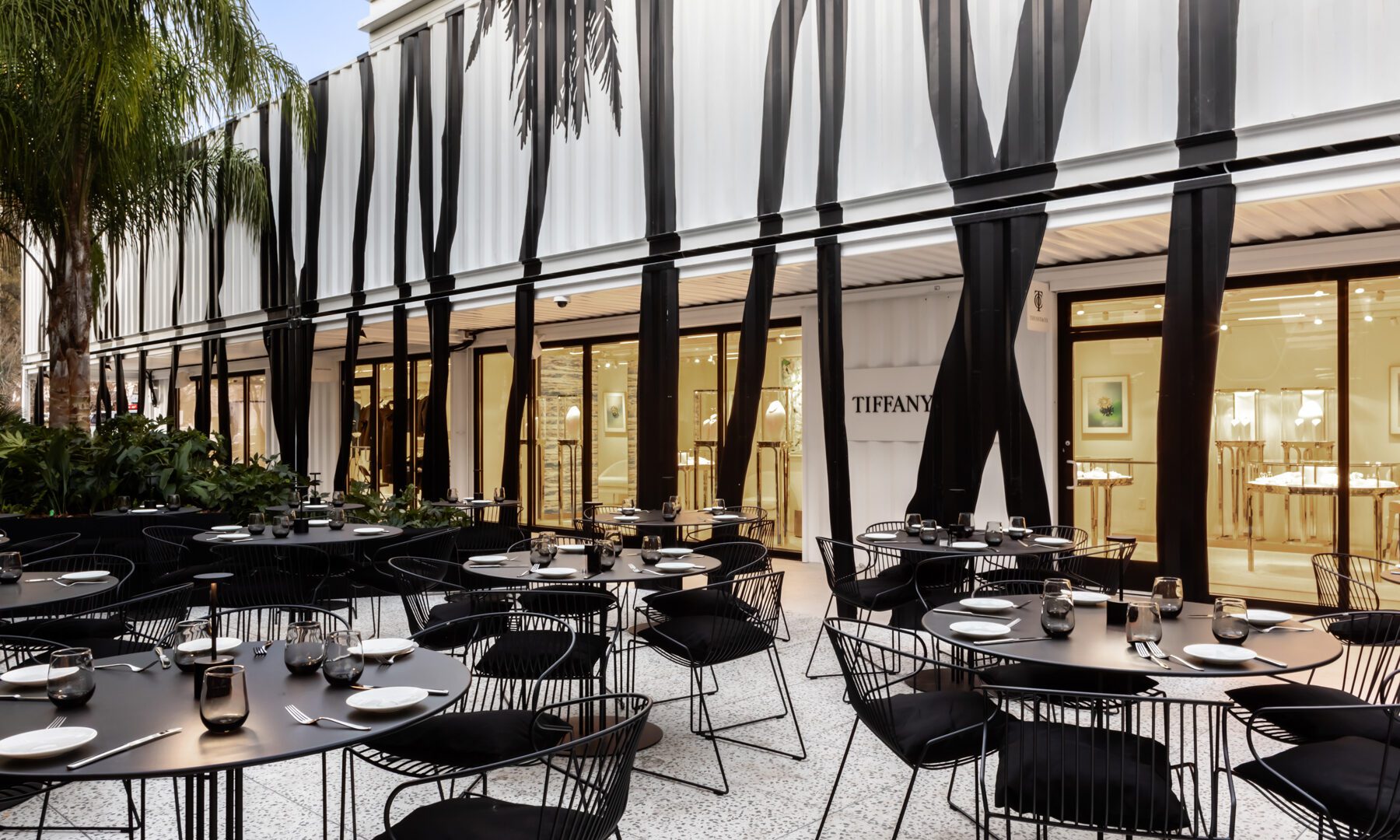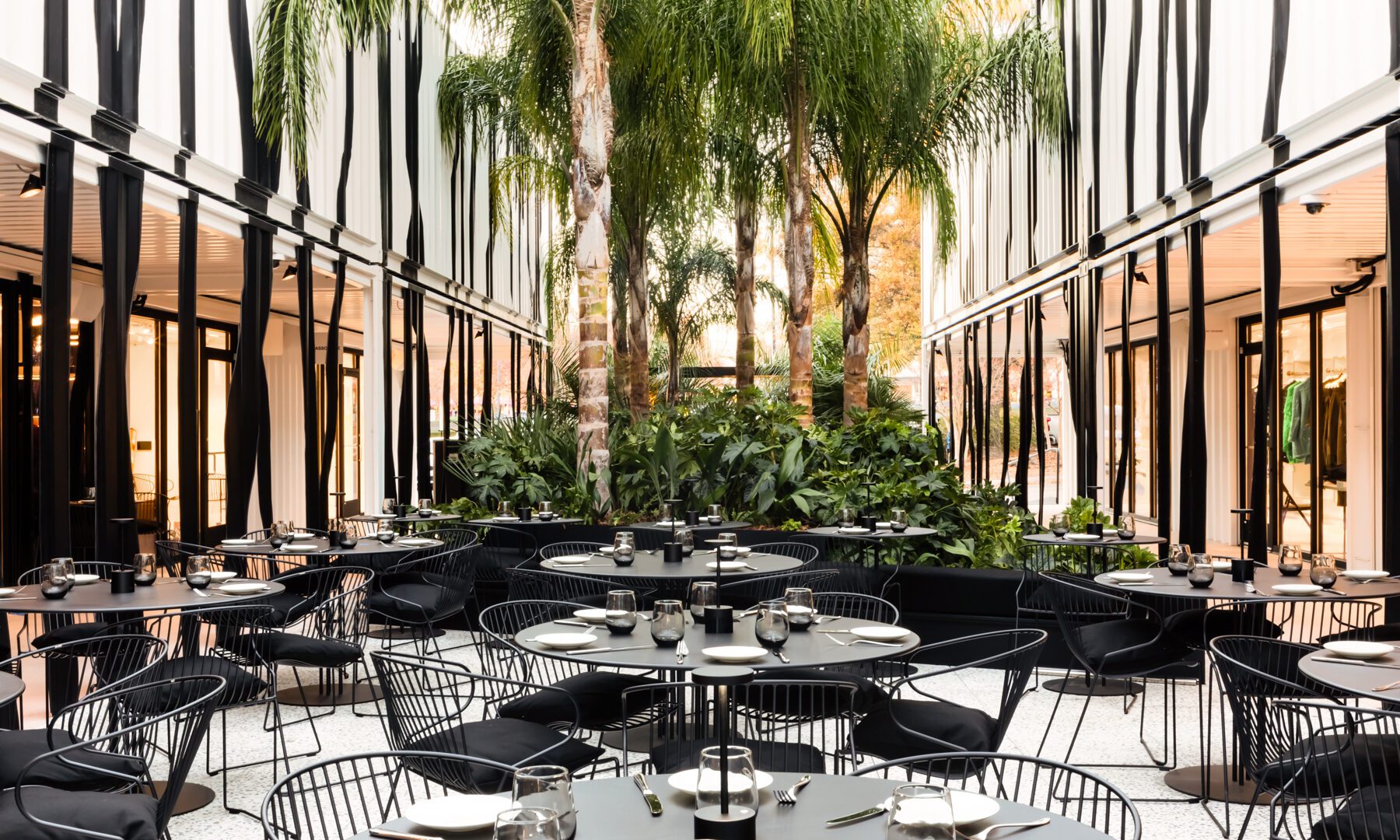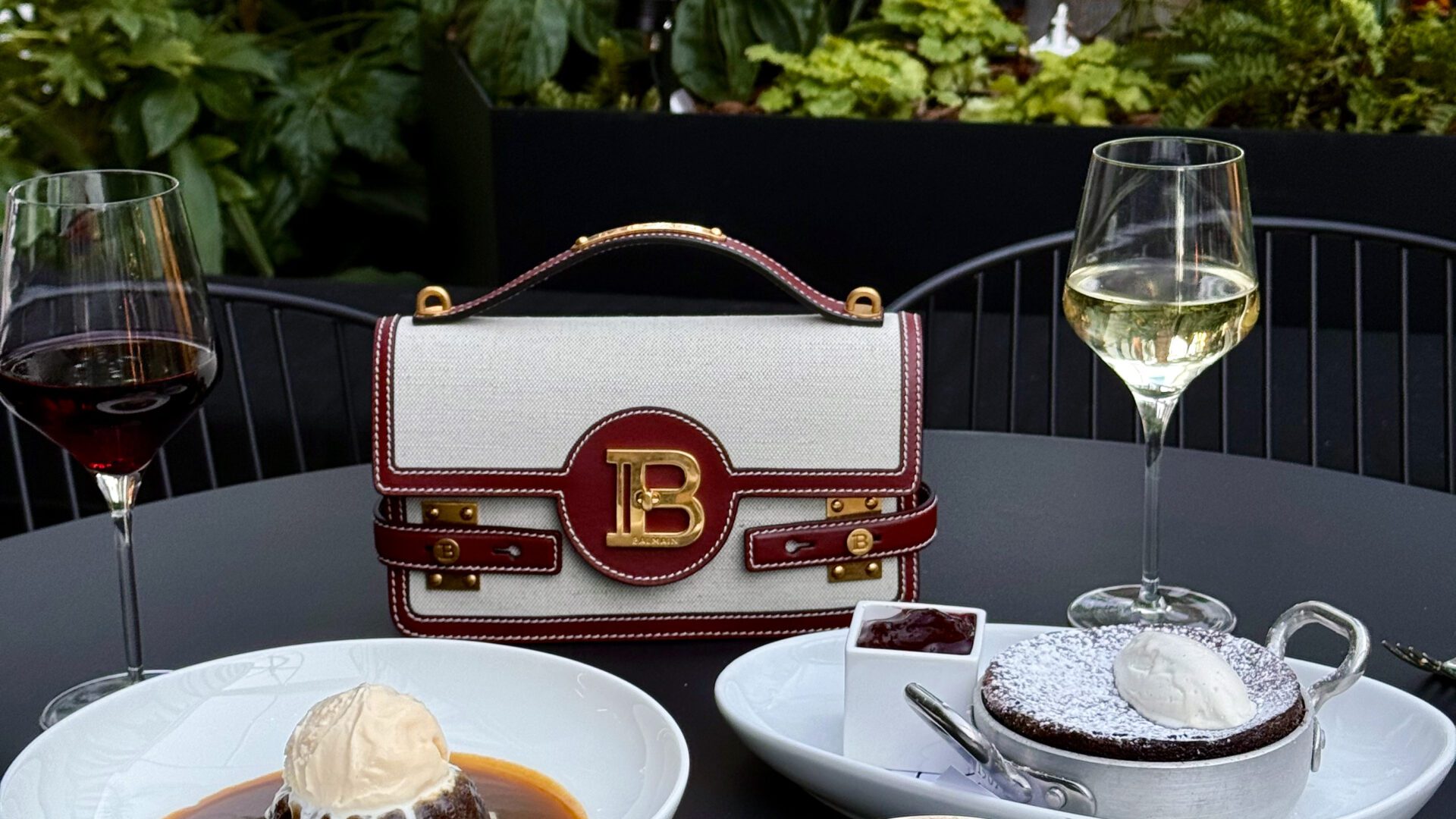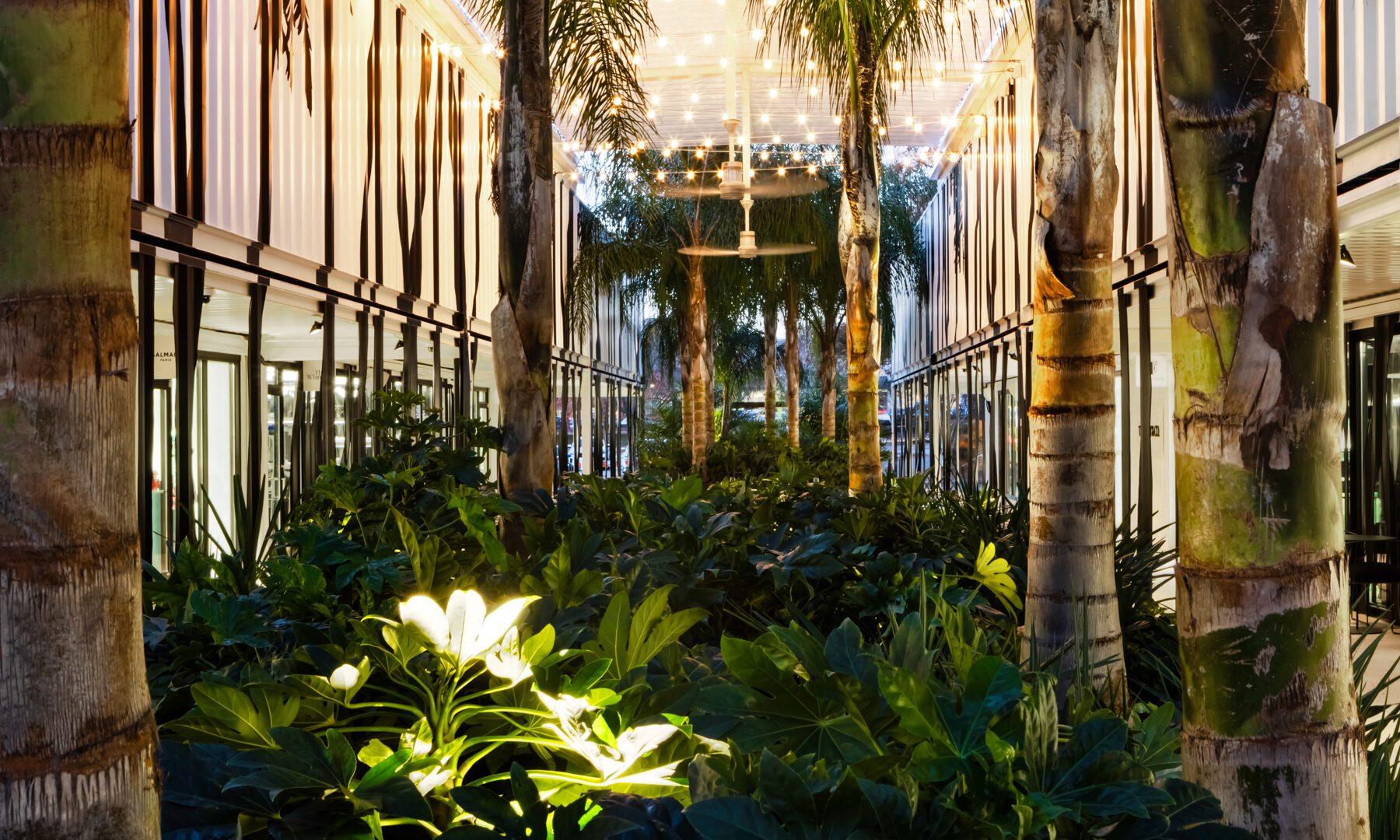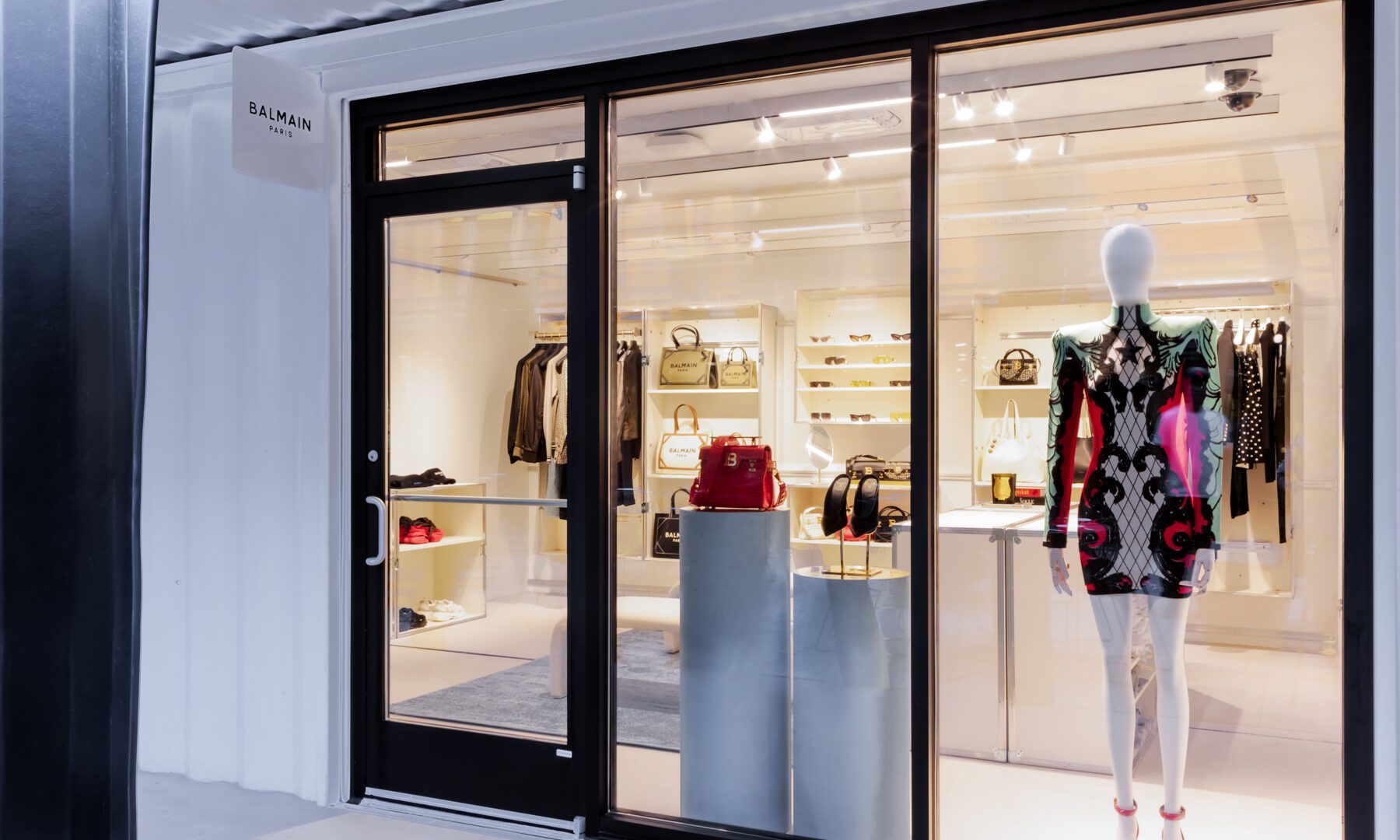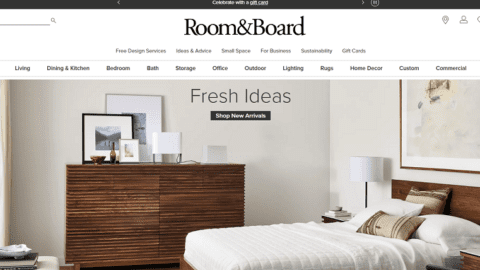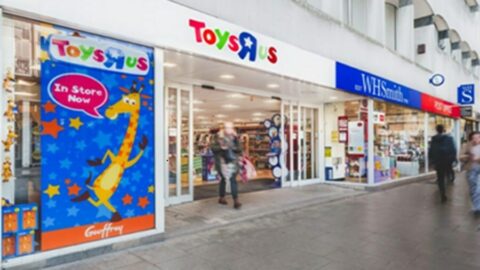Matthew Whitman Lazenby and his family have never dreamed small. Back in the 1950’s his grandfather, Stanley Whitman, decided to open a luxury shopping mall in Florida that would rival Manhattan’s Fifth Avenue. Inspired by the Lincoln Road shopping district in nearby Miami Beach, Bal Harbour Shops and the Whitman family — who still own and operate the enterprise — have continuously flown in the face of convention — and found enormous success as a result.
Taking advantage of the balmy Florida weather, Bal Harbour Shops pioneered the idea of an open-air shopping mall. Whitman made the bold choice to heavily landscape the space, including planting trees in the center (something some tenants initially protested so vehemently, fearing the foliage would block their storefronts, that a few tried to cut the trees down).
In 1971, Bal Harbour Shops became home to the first Neiman Marcus store outside of Texas, and four years later it was the first mall to have Neiman and Saks Fifth Avenue under the same roof. And despite having trouble selling tenants on the idea of a multi-story mall, which was considered a crazy idea at the time, the company moved forward with its planned addition of a second level in the 1970s.
The European luxury brands finally came around to the idea of establishing shops in America in the ’70s and they began to snap up space in the center, skyrocketing Bal Harbour Shops to even further success. Spoiler alert: that second floor filled up. Today the mall spans more than 450,000 square feet with another 250,000-square-foot addition in the works, and it is the most profitable shopping center in the world, raking in $2,555 per square foot, according to Insider Monkey.
Advertisement
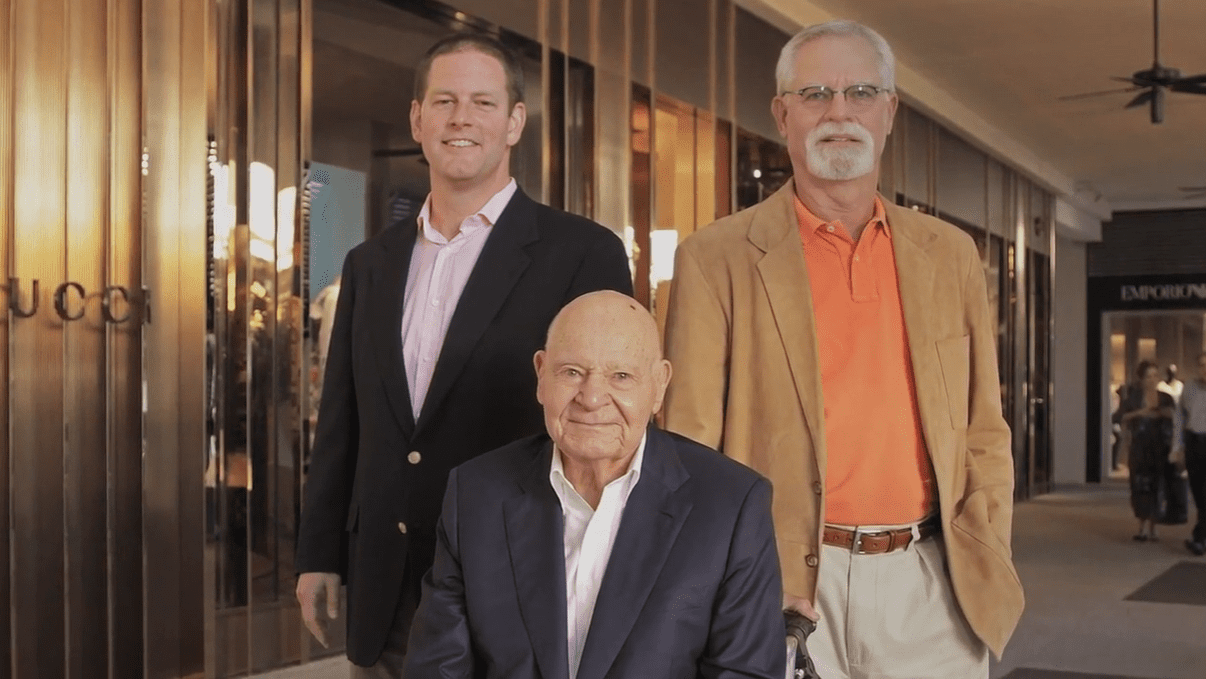
The point of this brief history is that the Whitman family — and it’s now the fourth generation running the business — isn’t afraid to take a risk. So it will come as no surprise that the company’s latest venture is equally expansive in its ambition — a traveling pop-up mall designed to bring the breezy, luxurious experience of shopping at Bal Harbour Shops to residents of “luxury deserts,” that is, locales with plenty of high-net-worth individuals but a lack of access to high-end brands.
“There’s nothing new today about the idea of a pop-up, everybody’s doing them, they’re almost ubiquitous,” said Lazenby, who now serves as President and CEO of the family business, Whitman Family Development, in an interview with Retail TouchPoints. “But to our knowledge this is the first pop-up that’s been done on the scale of a shopping center.”
Indeed, the ACCESS Pop-Up series, as it’s called, is a creative and logistical feat: “Most of my team wants to kill me, because this is a lot of work,” Lazenby said. Of course, that hasn’t stopped them, not in the least.
Meeting Luxury Consumers Where They Are
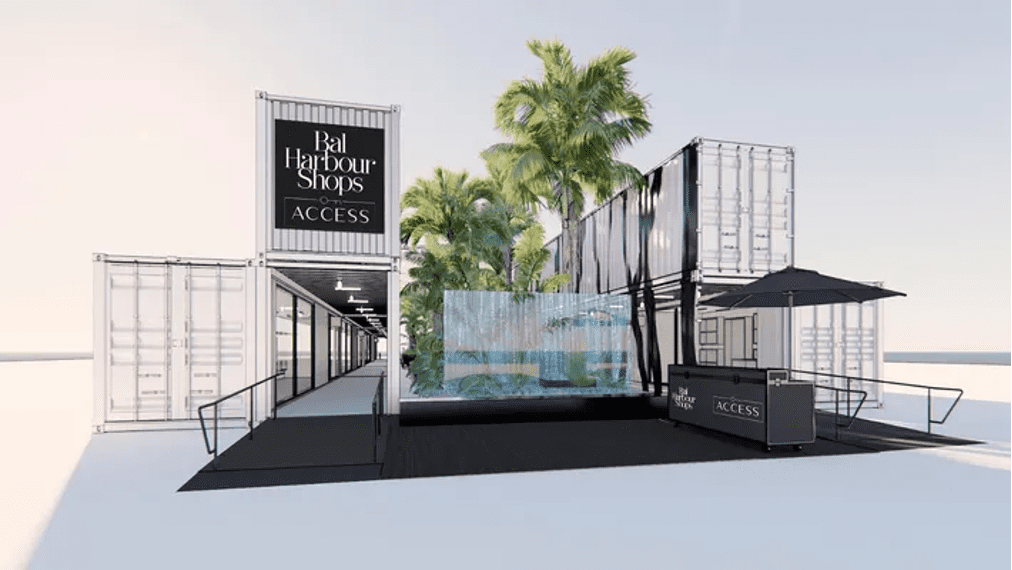
The COVID-19 pandemic brought about many changes in the U.S., and one of the most consequential has been the dispersion of individuals away from major city centers enabled by advances in remote work technologies and changing philosophies. The result has been the creation of new enclaves of wealthy consumers in cities across the U.S., far away from the luxury havens of LA and New York.
Lazenby and his team began looking for proactive ways to bring the Bal Harbour Shops experience to customers beyond Miami Beach. “In my grandfather’s era, landlords relied on their tenants to surprise and delight the customers,” he said. “Our customer was our tenant, and our tenants’ customers were the end customers, but that doesn’t work anymore. We as the landlord need to disintermediate the middleman and develop a meaningful, lasting relationship directly with the consumer, and that’s what we’re doing here. We’re finding out what she wants and what she doesn’t want in an ever-evolving way so that we can make all of our experiences, including experiences at Bal Harbour Shops, better and more responsive to her needs.
“We’re acquiring new Bal Harbour Shops customers in markets that may be far afield, but with the hope that we can service those customers either at the pop-up or through relationships they’ll create with personal shoppers who will be able to help them long after the pop-up is gone,” he added. “Then, ideally, one day those customers will say, ‘I’d love to go to Bal Harbour Shops. I’m going to book a trip.’”
Finding a Way to Make a Mall Mobile
While the “why” may be relatively easy to articulate, the “how” has been the hard part. A series of pop-ups seemed self-evident, but as Lazenby explained, “We’re in the landlord business, we’re real estate developers, so we struggled with the idea of going into someone else’s building and renting a space, then doing it all over again.”
The solution presented itself during the development process for the massive expansion Bal Harbour Shops is currently undertaking. The team in Florida, looking for ways to expedite the expansion, was toying with the idea of using shipping containers as temporary shopping venues while parts of the expansion were being built out. And voila, a solution to Lazenby’s pop-up dilemma!
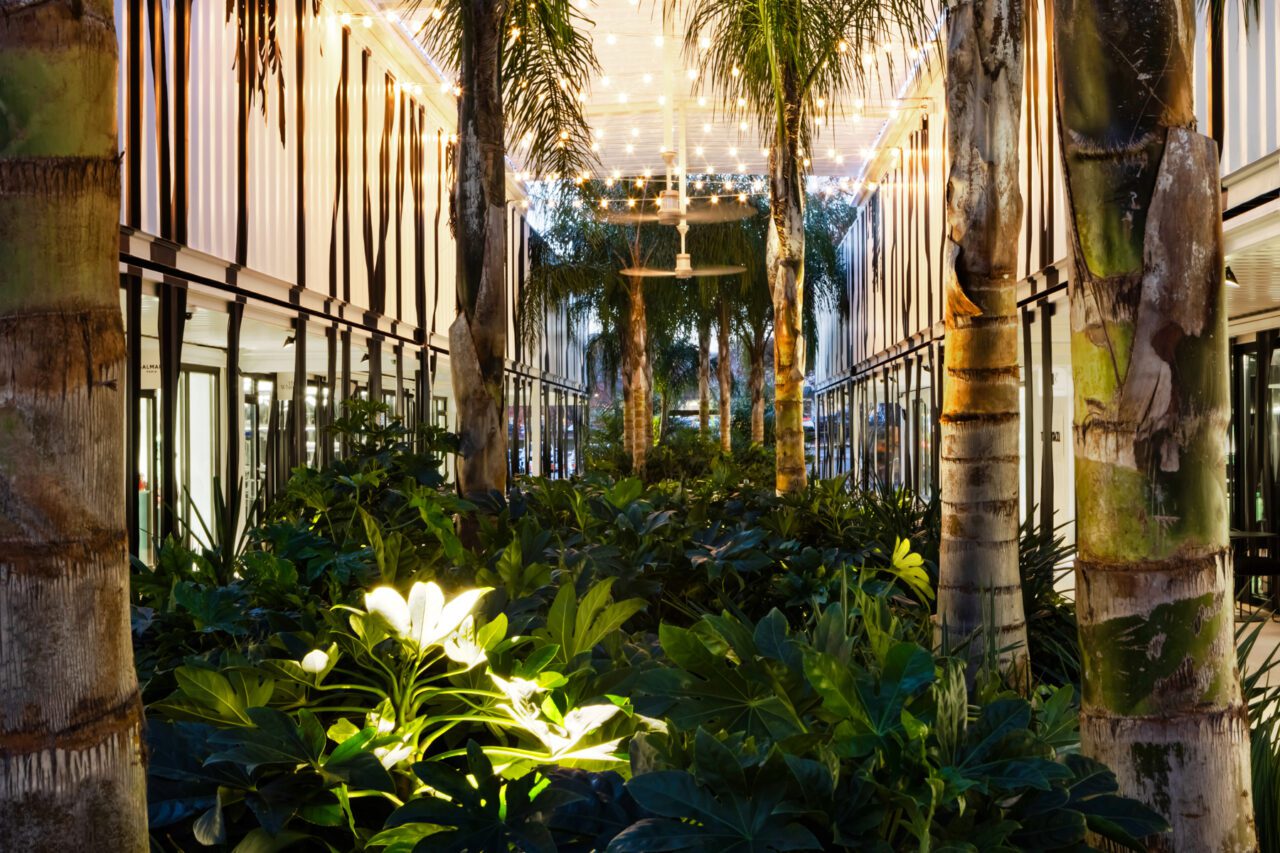
The ACCESS Pop-Up installation is constructed of approximately 30 shipping containers that can be easily transported from location to location. The containers are set up in a configuration that allows for 8,000 square feet of interior environments, all centered on an exterior courtyard with a retractable awning. The center court features the brand’s signature palm trees and koi pond as well as an upscale, 150-seat restaurant called The Whitman.
The containers were designed by architecture firm LOT-EK and fabricated just outside of Atlanta. All together, the experience takes up approximately 25,000 square feet, and the end result is a “custom-designed mobile shopping center that I believe faithfully reproduces the Bal Harbour Shops experience,” said Lazenby.
Transporting Customers to a Tropical Oasis
The center features 10 shops and the typical “run time” is about eight weeks, with a little over a week required for setup and disassembly on either side. Some brands choose to stay for the duration, while others cycle at the midpoint.
“It’s a very high-touch, personalized experience,” said Lazenby. “We pair you with a personal shopper who can not only help you navigate your way through the products available at the pop-up itself, but of course that’s just a sampling since we have over 100 stores at BHS. Any product that’s not available to you at the pop-up, we can get for you within a few days. So very, very high-tech stuff.”
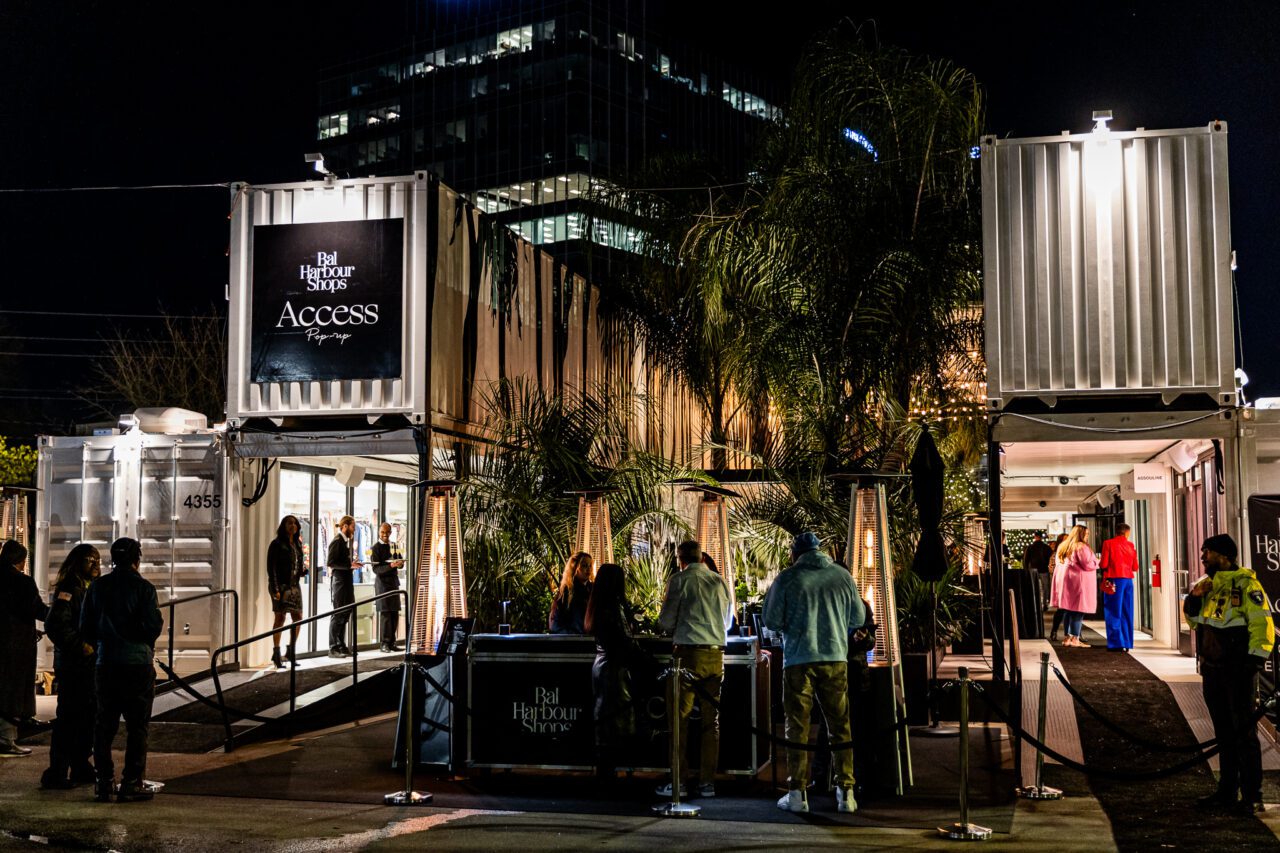
The first iteration took place in Raleigh, N.C. last November and welcomed more than 20,000 customers, who visited brands that included Assouline, Addict, Balmain, Bonpoint, Christofle, Etro, Frette, Gianvito Rossi, James Perse, Scanlan Theodore, Santa Maria Novella and Tiffany & Co. Many of the same brands have returned for the second ACCESS Pop-Up — which opened on March 8, 2024 in Sarasota, Fla. — where they are joined by Cremieux, Orlebar Brown, Golden Goose and Dolce & Gabbana. From there, ACCESS Pop-Up will travel to Walton County, Fla. and then to Greenville, S.C.
“In Raleigh, it was crazy; it was like you were transported to this tropical oasis and the moment you stepped outside of the pop-up it was winter,” said Lazenby. “[The space really creates] just this otherworldly feeling that would be hard to duplicate elsewhere. You see your food come out through what looks like a kitchen door, and it seems like any other restaurant experience, but if you peek inside that door, there’s no kitchen — all of the food is prepared in six different containers. There’s a container that does nothing but cook protein; there’s one that does nothing but prep food; and there’s one that does nothing but wash dishes. It’s a carnival.”
The Ideal Conditions for a Mobile Mall
A carnival is a fitting comparison, since oftentimes that’s how Lazenby and his team are treated by the local officials who have to approve the endeavor. “The folks in these local governments look at us like we’ve got six heads,” said Lazenby. “They’re excited about it, but they have no idea how they’re going to approve it. They’re like, ‘Should we put you through to the building department?’ And we say, ‘Well, no, these aren’t buildings.’ Eventually we say, ‘Who’s the person who approves the state fair? That’s who we want to talk to.’”
The whole operation is completely self-sufficient and can run entirely off the grid with generator power and water tanked in. In fact, just to test the theory, the company didn’t use any local utilities at the Raleigh site even though they were available.
But there are two things the operation does need in order to work: a relatively flat site with a compacted surface, like a parking lot or building site (mushy fairgrounds won’t work because the containers settle), and a concentration of ultra-high-net-worth consumers.
High-Touch, but Inventory-Light
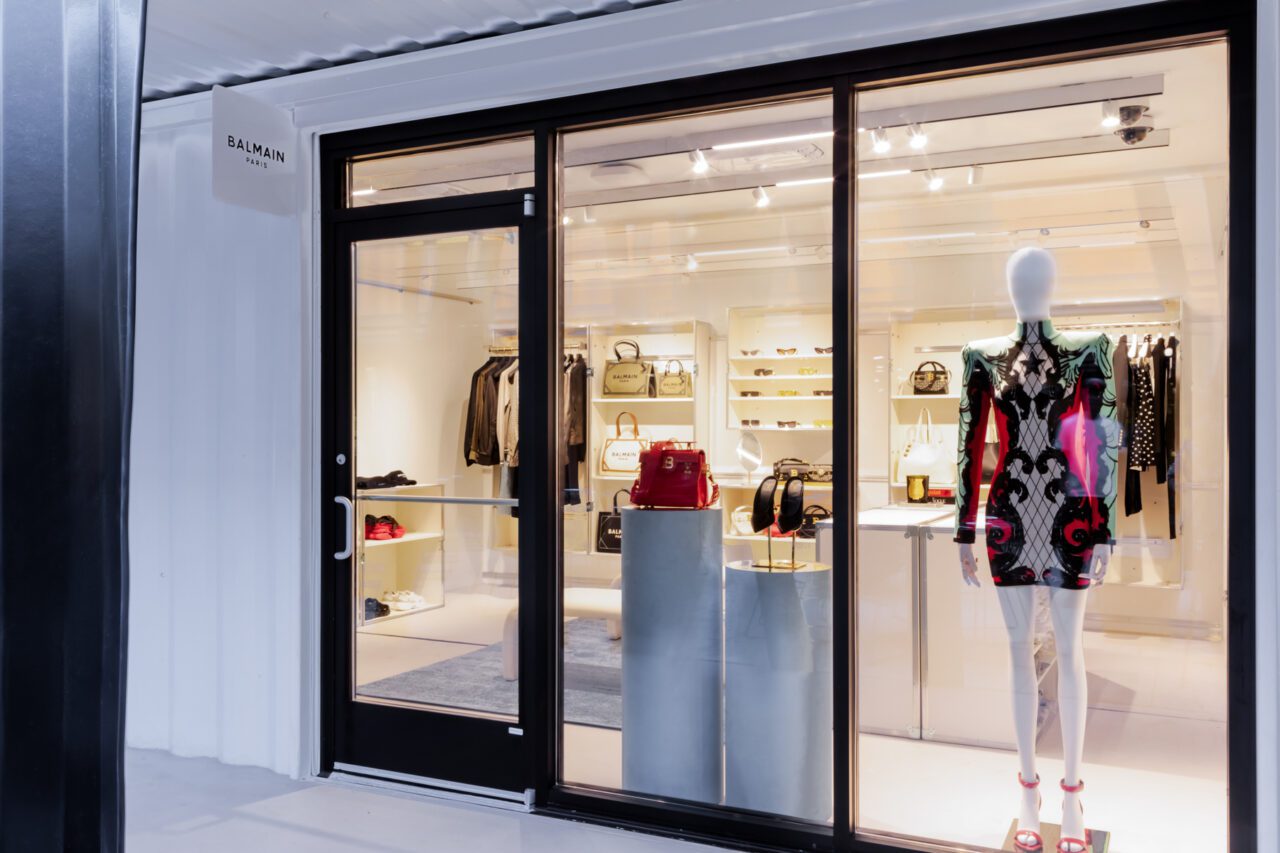
How the brands involved choose to serve those consumers is up to them, and Lazenby said it’s been fascinating to see the different approaches. Some brands treat the outing like any other store, hiring a store manager and associates and doing all the customer service themselves. Others don’t want to commit as much effort or resources, so instead they partner with Bal Harbour Shops, which staffs the store itself and then coordinates with the brand for fulfillment if the product is not available onsite at the pop-up.
“Jewelry stores and others that are selling a smaller product that is more easily transportable will often have product available for you to leave with, but the apparel stores, more often than not, are fulfilling those orders [offsite] and drop shipping them to your address,” said Lazenby.
The whole endeavor is ingenious, but it’s not without risk. However, Lazenby said that being a family-owned business gives the company both the vision and the freedom to try something bold and new like ACCESS Pop-Up.
“We have something at Bal Harbour Shops that’s distinct; there’s a formula at work,” he explained. “It’s all about making and celebrating an emotional connection with our customers. It’s not intended to be transactional. We want people to come and spend time with us and feel special in the process. It’s been the same fundamental formula for almost 60 years. And I do think that firms like mine are uniquely positioned to look ahead, because we’re a privately held, generation-four family business. We’ve had all sorts of firsts [throughout the years] and I think the ability to define success in terms of decades and generations, and not quarters, is what allowed us to do that.”
